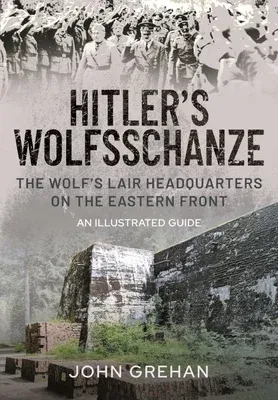Set deep in the heart of the Masurian woods of northern Poland, in what
was formally East Prussia, lies a vast complex of ruined bunkers and
shelters that once constituted Hitler's headquarters - the Wolfsschanze
or Wolf's Lair - for Germany's attack upon the Soviet Union in 1941.
Built in conditions of the utmost secrecy, the Wolfsschanze was
surrounded by fences and guard posts, its paths and tracks were hidden,
and buildings were camouflaged and concealed with artificial grass and
trees planted on their flat roofs. As the war in Eastern Europe
continued, so the Wolf's Lair grew in scale and sophistication, until
it's 2.5 square miles incorporated more than eighty buildings including
massive reinforced bunkers. It was also at the Wolfsschanze that Colonel
von Stauffenberg almost killed Hitler in the summer of 1944. That
building is still there, its roof sitting on its collapsed walls.
With the aid of a unique collection of color photographs, the reader is
guided around the Wolfsschanze as it appears today, with each building
and its purpose identified. Laced with numerous personal accounts of the
installation and of Hitler's routines, supplemented with contemporary
images, the Wolfsschanze is brought to life once more.
The Wolfsschanze, however, was not the only military complex in this
small part of the Eastern Front. Once Hitler has established his command
centre at the Wolfsschanze, in effect the home of the Oberkommando der
Wehrmacht (or military high command), the other branches of the German
armed forces and civil authorities quickly followed suit. Just a few
miles away, for example, the German Army built its own operational
headquarters at Mauerwald - a complex which amounted to an even greater
concentration of buildings, many of which remain intact and open to the
public. Göring duly ordered that the Luftwaffe's headquarters, codenamed
Robinson, be built further out near the current Russian border, whilst
Himmler's SS headquarters at Hochwald and that for Hans Lammers' Reich
Chancellery were situated back nearer the Wolfsschanze.
For the first time, these astonishing sites, five complexes from which
the war on the Eastern Front was directed, are shown and described in
one book, providing a comprehensive survey of the installations whose
gigantic scale still evinces awe and wonder.

